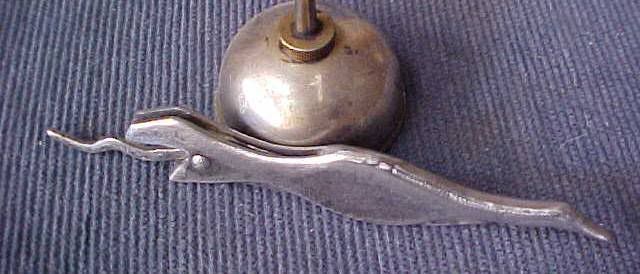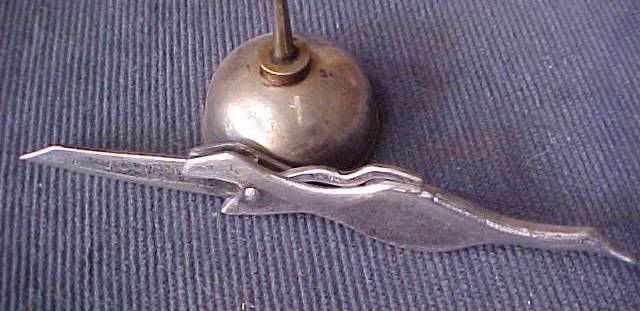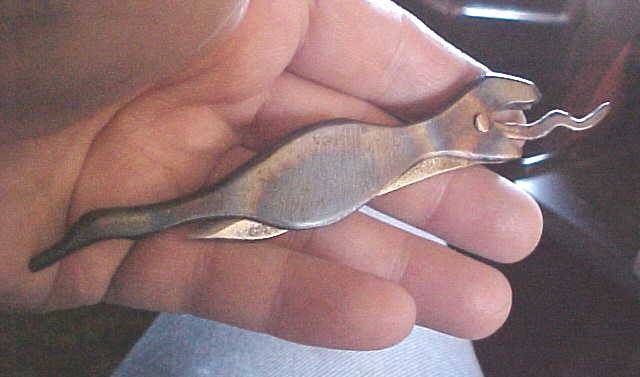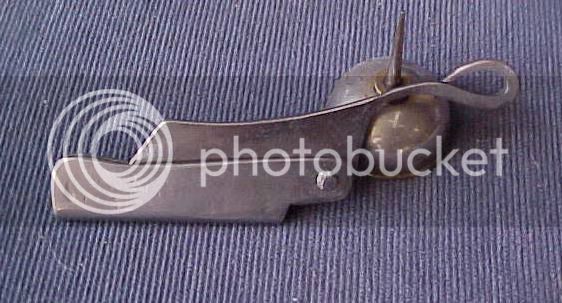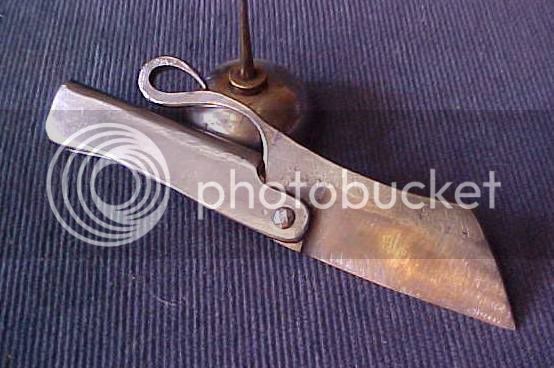I finally got around to tinkering up a several more of those French iron
handled clasp knives made similar to the ones found on the wreck of la Salle's
ship la Belle that sank off the Texas coast near Corpus Christi in 1685.
The blades are carefully chiseled and ground out of saw blades, and the
handles are folded up from sheet iron. On the bottom knife I used a thinner
sheet iron than I normally do. It is around 20 gauge, but is closer to the
very thin handles on the originals. Those were like the metal on coffee cans.
The others I used about 14 gauge sheet. That thin handled one is OK, and
tough enough to hold up in use. It just doesn't have the ”¦ feel ”¦ that
a knife should have. I'm just too used to a thicker handle on a knife.
It just feels too ”¦ thin. I cannot flex the handle by hand like I could
if it had been made from coffee can material like those originals. I still
can't bring myself to put a handle that thin on one. Just too ”¦ cheap ”¦
for my taste. Although, those original knives were made that cheap,
And the original makers weren't even trying to hide the fact that they
were making cheap knives to trade to the Indians.
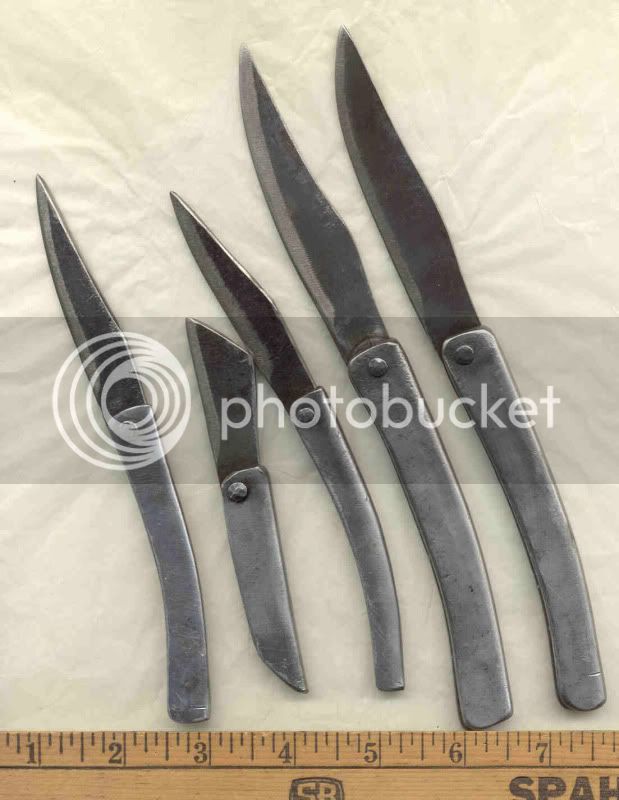
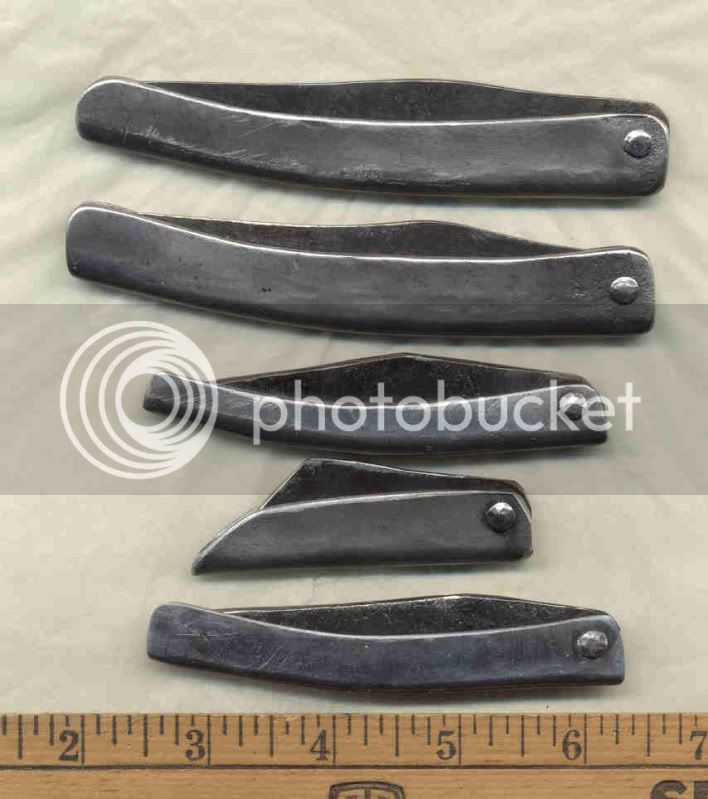
That little skew point knife just happened to be the size of material I
had on hand. It is cute, but you have to hold it carefully because of its
size. The handle is 2 3/4 inches long, 4 3/4 inches opened. That bottom
one with the thin handle is 3 3/4 inches long closed, 6 3/4 opened. The
other small one is a tad shorter - 3 5/8 closed, 6 1/2 open. The big
ones have a nice "heft" to them. The top one is 4 1/2 closed, 8 1/2
opened. The next down is the same. The only difference is that
slightly more pronounced peak in the blade and a little more swoop
towards the point. Still working on loosening them up a bit more for
opening/closing - but not TOO loose. You don't want the blade flopping
back and forth in use, but you also want to be able to open it without
using a pliers. Plus I need to take a small file to a couple spots on some
of the handles. I have put an initial edge on them, but most people would
want to sharpen them more to their tastes.
More fun tinkering. If you have any questions, please send me a PM or
an email to [email protected]
Mikey - that grumpy ol' German blacksmith out in the Hinterlands
handled clasp knives made similar to the ones found on the wreck of la Salle's
ship la Belle that sank off the Texas coast near Corpus Christi in 1685.
The blades are carefully chiseled and ground out of saw blades, and the
handles are folded up from sheet iron. On the bottom knife I used a thinner
sheet iron than I normally do. It is around 20 gauge, but is closer to the
very thin handles on the originals. Those were like the metal on coffee cans.
The others I used about 14 gauge sheet. That thin handled one is OK, and
tough enough to hold up in use. It just doesn't have the ”¦ feel ”¦ that
a knife should have. I'm just too used to a thicker handle on a knife.
It just feels too ”¦ thin. I cannot flex the handle by hand like I could
if it had been made from coffee can material like those originals. I still
can't bring myself to put a handle that thin on one. Just too ”¦ cheap ”¦
for my taste. Although, those original knives were made that cheap,
And the original makers weren't even trying to hide the fact that they
were making cheap knives to trade to the Indians.


That little skew point knife just happened to be the size of material I
had on hand. It is cute, but you have to hold it carefully because of its
size. The handle is 2 3/4 inches long, 4 3/4 inches opened. That bottom
one with the thin handle is 3 3/4 inches long closed, 6 3/4 opened. The
other small one is a tad shorter - 3 5/8 closed, 6 1/2 open. The big
ones have a nice "heft" to them. The top one is 4 1/2 closed, 8 1/2
opened. The next down is the same. The only difference is that
slightly more pronounced peak in the blade and a little more swoop
towards the point. Still working on loosening them up a bit more for
opening/closing - but not TOO loose. You don't want the blade flopping
back and forth in use, but you also want to be able to open it without
using a pliers. Plus I need to take a small file to a couple spots on some
of the handles. I have put an initial edge on them, but most people would
want to sharpen them more to their tastes.
More fun tinkering. If you have any questions, please send me a PM or
an email to [email protected]
Mikey - that grumpy ol' German blacksmith out in the Hinterlands





